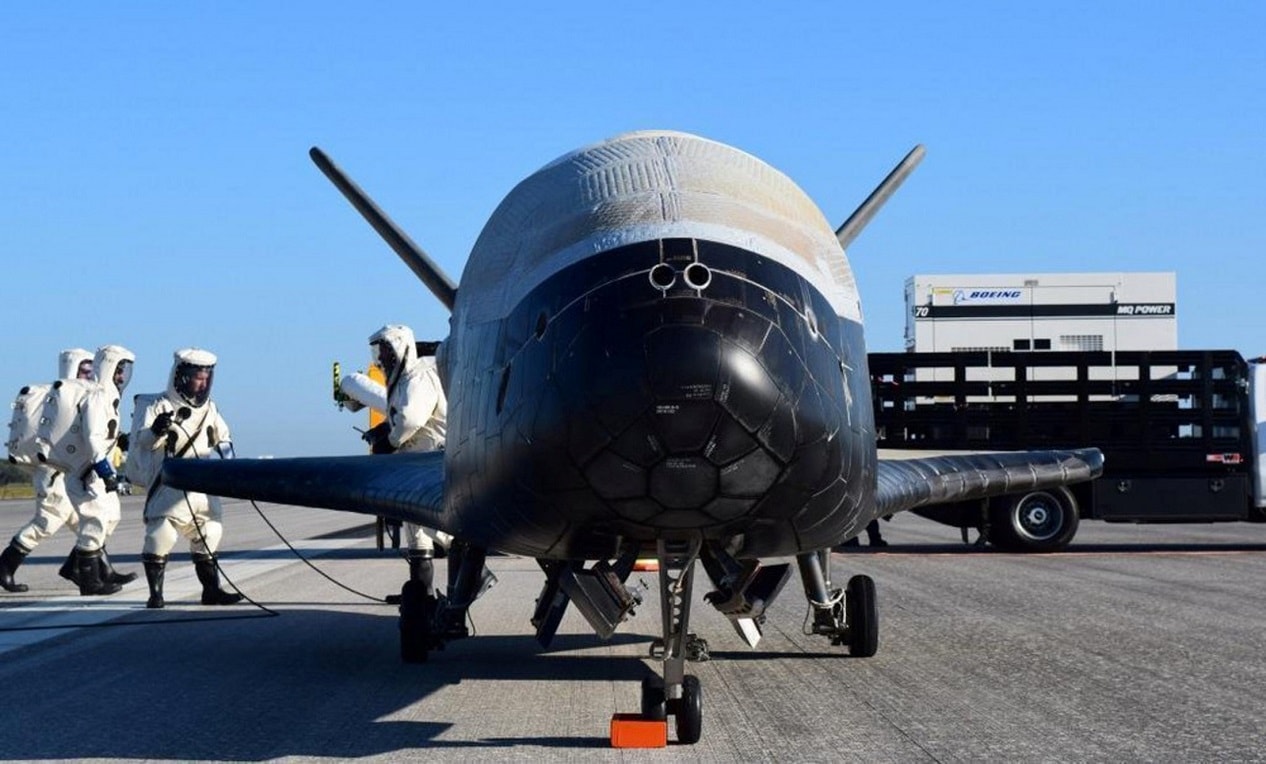The relatively new U.S. Space Force has a hit on its hands. The X-37B looks like it is going to nab another record for orbital flight. This robotic space plane is resilient and steadfast. The X-37B has been in flight for a mission called Orbital Test Vehicle-6 since May 17, 2020. That is over 773 days as of June 29. The record is 780 days, so it just needs around seven more to set a record for duration.
It’s a Space Force Show Now
The exact missions of the space plane, built by Boeing, are classified. Previously run by the Air Force Rapid Capabilities Office, the X-37B is expected to be a vehicle for research and development in low earth orbit that spawns scientific discovery. The Space Force took control of the X-37B program in 2020 and assigned it to a mission unit known as Delta-9 at Schriever Space Force Base in Colorado.
The Future of Space is Solar Generation
Space.com says one experiment should show promise. It has to do with space-based solar power and sunlight to microwave transfer. “The U.S. Naval Research Laboratory (NRL), investigates transforming solar power into radio frequency microwave energy. The experiment is called the Photovoltaic Radio-frequency Antenna Module, or PRAM for short.”
Diverse Scientific Mission
The unmanned platform can conduct valuable, longer-term experiments for years in orbit with better duration than the space shuttle program. The X-37B will continue to provide data for better avionics, navigation, high-temperature performance, and advanced propulsion techniques.
Quick History of the X-37B
The X-37B was born at NASA in 1999 and sent over to DARPA to run in 2004. Two vehicles emerged from this partnership – the landing/ test vehicle and the orbital vehicle. DARPA proved the flight dynamics. The operation switched over to the Air Force, which has overseen five missions since 2010 with two vehicles spending 2,865 days in orbit – the space shuttle spent 1,320 days in orbit. Then finally the Space Force owned the program.
It’s a Mini-Space Plane
The X-37B is not very big – only 10 feet high with a length of 29 feet and a wingspan of 14 feet. It weighs 11,000 pounds when launched. Solar Cells with lithium-Ion batteries power the craft.
The space plane launches on a rocket and is reusable after it lands autonomously on a runway. Its orbit is low enough that astronomy enthusiasts can see it from the ground.
Solar Experiments Are the Ones To Watch
Peter Garretson, writing in Politico, believes that the “big idea” for the X-37B will be the generation of space-based solar power.
“Of all the potential new markets in space – such as tourism and asteroid mining – none offers the potential revenues or societal return of space solar power. None addresses as colossal a market as world energy demand. None offers the impact of an entirely green energy source which can scale to global demand,” Garretson wrote.
Could It Fight a Space Battle?
While the Space Force contends it is a peaceful research vehicle, there has been speculation that it could someday enter into space warfare against enemy satellites since it is proven to handle its current missions so well. The idea, according to former Air Force Secretary Heather Wilson, is to keep China and Russia guessing.
There’s no guessing when it comes to orbital flight duration. We know this space plane is effective and that should enhance the overall mission of the U.S. Space Force. The X-37B has much potential for scientific development, especially in solar power, but also in future space flight in general. The X-37B is a record-setter and will help the United States maintain its space leadership over rivals such as China and Russia.
Now serving as 1945’s Defense and National Security Editor, Brent M. Eastwood, PhD, is the author of Humans, Machines, and Data: Future Trends in Warfare. He is an Emerging Threats expert and former U.S. Army Infantry officer. You can follow him on Twitter @BMEastwood.

